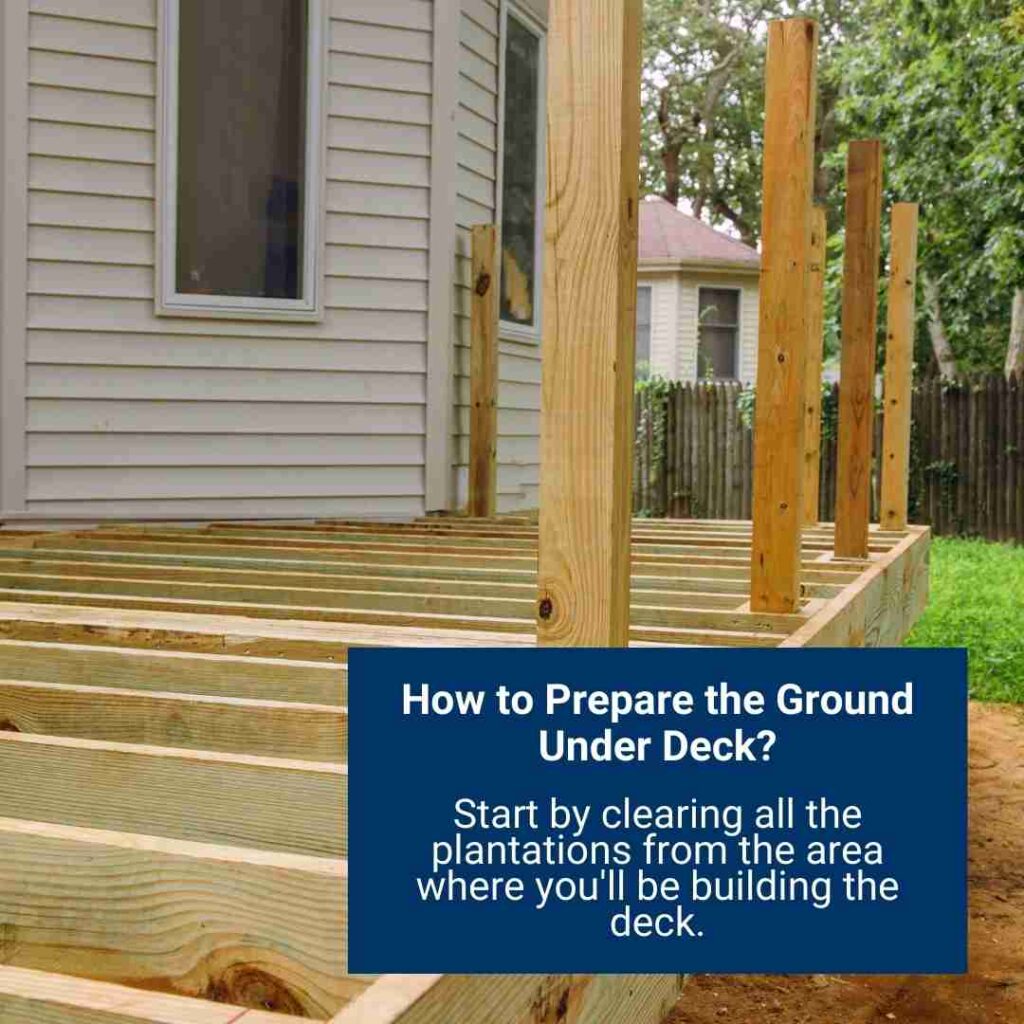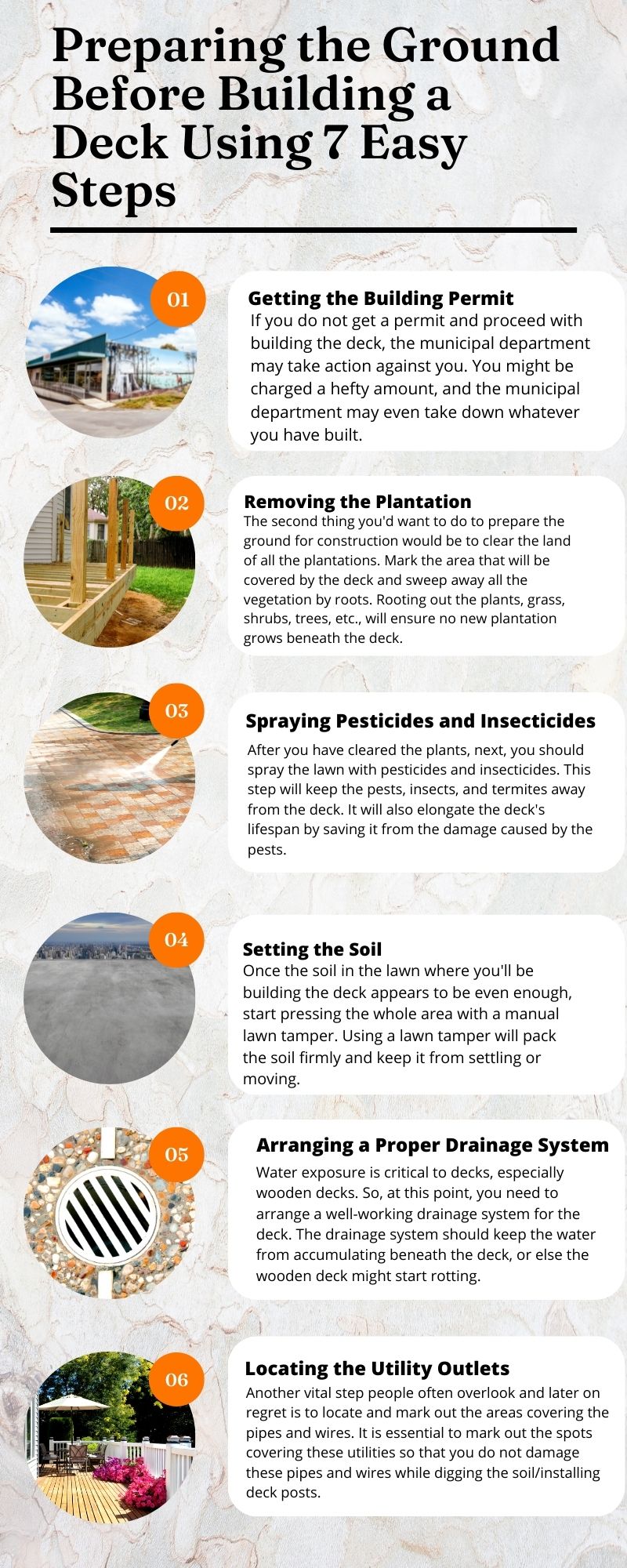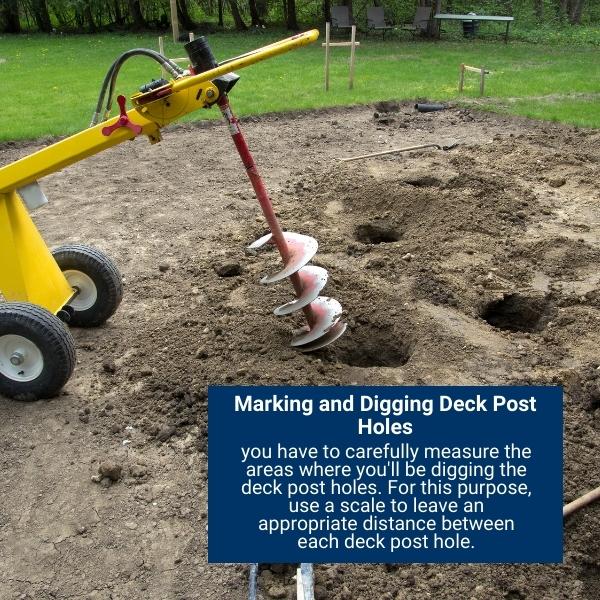How well you prepare the ground where you’ll be building the deck plays a significant role in determining how stable and enduring the deck is. It is important to carefully craft the site where you’ll be constructing the deck to avoid the hassle of paying for significant repairs right ahead. It might leave you wondering how to prepare the ground under deck?
First of all, you need to make sure the site where you’ll be building the deck is suitable for holding decks. The soil/gravel should be even and firmly packed. You also need to get a building permit, remove the plantation, mark the pipes, ensure a proper drainage system, etc., before you start constructing atop.
These are a few steps you need to take to prepare the ground where you’ll be making the deck. Keep reading this guide to learn more about how you can prepare the ground for a strong and sturdy deck.
How To Prepare The Ground Under Deck?
Preparing the ground before construction might seem like a trivial matter to some. But if you do not prepare the ground well, the deck might be a disaster. However, this can be avoided by following a few important steps.

Start by clearing all the plantations from the area where you’ll be building the deck. It would be best to incorporate weed killers and spread them all over the place where the deck will stand.
It is also essential to ensure the ground where the deck will be mounted is even. Also, you should tightly pack the soil into the ground before proceeding. Moreover, marking the pipes and wires buried under the ground will also save the utilities from getting damaged.
Lastly, you need to mark the places you’ll be installing the deck posts on. Carefully measure the area, and after deciding the locations, mark them with chalk or white flags.
However, before building the deck, you need to go to the local building code department and gain a permit. Doing so will ensure you are not breaking the rules and save you from fines.
Also Read: Deck VS Porch
Preparing The Ground Before Building A Deck Using 7 Easy Steps
The 7 steps you need to follow to fully prepare the ground before building a deck are:

Getting The Building Permit
Before any construction begins, the municipal department needs to approve the plan and permit you to build a deck. The team ensures the building code is not violated and the deck is made according to the safety standards of the area.
If you do not get a permit and proceed with building the deck, the municipal department may take action against you. You might be charged a hefty amount, and the municipal department may even take down whatever you have built.
Removing The Plantation
The second thing you’d want to do to prepare the ground for construction would be to clear the land of all the plantations. Mark the area that will be covered by the deck and sweep away all the vegetation by roots. Rooting out the plants, grass, shrubs, trees, etc., will ensure no new plantation grows beneath the deck.
Weeds and plants may crawl onto the deck’s surface and damage the wooden flooring. So, it is recommended to spread weed killers across the land to be covered by the deck.
Spraying Pesticides And Insecticides
After you have cleared the plants, next, you should spray the lawn with pesticides and insecticides. This step will keep the pests, insects, and termites away from the deck. It will also elongate the deck’s lifespan by saving it from the damage caused by the pests.
Setting The Soil
After all, the plantation is out of the way, and you have sprayed the lawn with pesticides; it is time to inspect and set the soil. Check the soil level and add/remove mud according to the lawn’s needs.
Once the soil in the lawn where you’ll be building the deck appears to be even enough, start pressing the whole area with a manual lawn tamper. Using a lawn tamper will pack the soil firmly and keep it from settling or moving.
However, while using the soil tamper, you need to make sure the soil is not too dry/too wet because the soil tamper will work best.
Also Read: Can You Build a Deck Over a Septic Tank? Step by Step Guide
Arranging A Proper Drainage System
Water exposure is critical to decks, especially wooden decks. So, at this point, you need to arrange a well-working drainage system for the deck. The drainage system should keep the water from accumulating beneath the deck, or else the wooden deck might start rotting.

You can make a slope or use another way to drain the water from the deck quickly. But whatever method you are using, it should not let the water stand at the same spot for more than a couple of minutes.
Locating The Utility Outlets
Another vital step people often overlook and later on regret is to locate and mark out the areas covering the pipes and wires. It is essential to mark out the spots covering these utilities so that you do not damage these pipes and wires while digging the soil/installing deck posts.
So, I’d recommend you look at your house’s map and figure out where these utilities might be buried in the ground. Once you’ve located these utilities, mark them with chalk and then work carefully around those outlines.
Marking And Digging Deck Post Holes
Lastly, you have to carefully measure the areas where you’ll be digging the deck post holes. For this purpose, use a scale to leave an appropriate distance between each deck post hole. After the holes have been marked with chalk, once again check the distance between the marked areas. Start digging out the soil once you are happy with the distance between the marked spots.

After carrying out all these steps, you have to install footings and deck posts and fill the holes tightly with soil. Once the posts are standing, you can proceed with actually building the deck.
Note: While constructing the deck, ensure no children/pets are nearby as they tend to injure themselves seriously.
Conclusion
A deck is only as robust as its foundation, and a strong foundation calls for a well-prepared ground on which the deck stands. So, it is crucial to ensure you know how to properly prepare the ground for installing the deck. Because if you ignore setting up the deck correctly, your deck might rot and eventually fall to pieces. If you don’t want this to happen to your deck on which you’ll be spending ample time, money, and effort, you can check the steps mentioned in this article for advanced guidance.
Also Read: Can You Build a Deck Over an AC Unit? – Step by Step Guide

